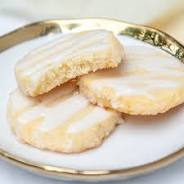The Perfect Treat: Lemon Glazed Shortbread Cookies
Shortbread cookies are a beloved classic, known for their rich buttery flavor and delicate crumbly texture. But when you add a zesty lemon glaze to the mix, you take these cookies to a whole new level of deliciousness.
These lemon glazed shortbread cookies are the perfect treat for any occasion. Whether you’re hosting a tea party, looking for a sweet snack, or simply craving something indulgent, these cookies will not disappoint.
Ingredients:
- 1 cup unsalted butter, softened
- 1/2 cup powdered sugar
- 2 cups all-purpose flour
- Zest of 1 lemon
- 1/4 cup fresh lemon juice
- 1 cup powdered sugar (for the glaze)
Instructions:
- In a mixing bowl, cream together the butter and powdered sugar until light and fluffy.
- Add the lemon zest and mix until well combined.
- Sift in the flour and mix until a dough forms.
- Roll out the dough on a floured surface to about 1/4 inch thickness and cut out cookies using your desired cookie cutter shapes.
- Place the cookies on a baking sheet lined with parchment paper and bake at 350°F for about 12-15 minutes or until lightly golden brown.
- While the cookies are cooling, whisk together the lemon juice and powdered sugar to make the glaze.
- Dip each cookie into the glaze or drizzle it over the top using a spoon.
- Allow the glaze to set before serving.
These lemon glazed shortbread cookies are sure to become a favorite in your household. The combination of buttery shortbread with tangy lemon is simply irresistible. Enjoy them with a cup of tea or share them with friends – either way, they are bound to impress!
Mastering Lemon Glazed Shortbread Cookies: Common Mistakes, Key Differences, and Expert Tips
- What are common mistakes when making shortbread?
- What is the difference between shortbread and shortbread cookies?
- What’s the difference between butter cookies and shortbread cookies?
- What is the secret to good shortbread?
What are common mistakes when making shortbread?
When making shortbread cookies, there are several common mistakes that can affect the final result. One common mistake is overmixing the dough, which can lead to tough and dense cookies instead of the desired delicate and crumbly texture. Another mistake is not chilling the dough adequately before baking, which can cause the cookies to spread too much in the oven. Additionally, using warm or softened butter instead of cold butter can also impact the texture of the shortbread. It’s important to follow the recipe instructions carefully and pay attention to details such as ingredient temperatures and mixing techniques to ensure perfect lemon glazed shortbread cookies every time.
What is the difference between shortbread and shortbread cookies?
Shortbread and shortbread cookies are often used interchangeably, but there is a subtle distinction between the two. Shortbread typically refers to the traditional Scottish treat made with just three simple ingredients: butter, sugar, and flour. It has a crumbly texture and rich buttery flavor that sets it apart from other types of cookies. On the other hand, shortbread cookies are a variation of classic shortbread that may include additional ingredients like flavorings (such as lemon zest in lemon glazed shortbread cookies) or mix-ins (such as chocolate chips or nuts). While both shortbread and shortbread cookies share a similar base, the addition of extra elements in shortbread cookies allows for more versatility in flavors and textures.
What’s the difference between butter cookies and shortbread cookies?
When it comes to the distinction between butter cookies and shortbread cookies, the key differences lie in their ingredients and textures. Butter cookies typically contain a higher proportion of sugar compared to shortbread cookies, resulting in a sweeter taste. Additionally, butter cookies often have a lighter and more tender texture due to the addition of eggs or other leavening agents. On the other hand, shortbread cookies are characterized by their rich buttery flavor and crumbly texture, achieved by using a higher ratio of butter to flour with minimal additional ingredients. While both types of cookies showcase the deliciousness of butter as a primary ingredient, their unique compositions offer distinct tastes and textures that cater to different preferences and occasions.
What is the secret to good shortbread?
When it comes to making good shortbread, the secret lies in the quality of ingredients and the technique used. For a perfect shortbread cookie, using high-quality butter is essential as it contributes to that rich, buttery flavor and tender texture. The ratio of butter to flour is also crucial in achieving the right balance of richness and crumbliness. Additionally, handling the dough gently and not overmixing it will help maintain that delicate texture that shortbread is known for. Lastly, allowing the baked shortbread to cool properly before serving or glazing ensures that it reaches its full potential in taste and texture. Mastering these key elements will elevate your shortbread game and result in irresistible cookies every time.
Tags: additional ingredients, buttery flavor, common mistakes, cookies spread too much, crumbly texture, delicate texture, dense cookies, higher proportion of sugar in butter cookies, ingredient temperatures, key differences in ingredients and textures, lemon glazed shortbread cookies, making shortbread, not chilling dough adequately, overmixing dough, recipe instructions, scottish treat, softened butter, three simple ingredients, tough cookies, warm butter
